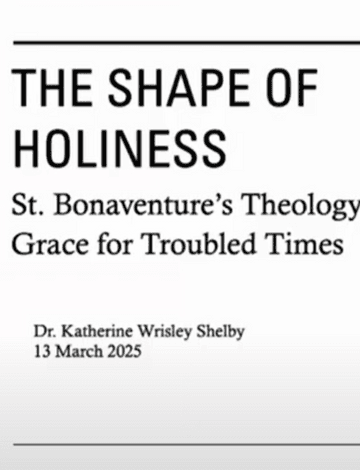
On July 19, Franciscans celebrate the memory of Saint John of Dukla, a noted friar preacher and pastoral leader.

On July 19, Franciscans celebrate the memory of Saint John of Dukla, a noted friar preacher and pastoral leader.



On July 19, Franciscans celebrate the memory of Saint John of Dukla, a noted friar preacher and pastoral leader.
On July 17, Franciscans in the U.S.A. honor the memory of St. Francis Solano (1549-1610), celebrated missionary to South America. The rest of the Order presently celebrates his memorial on July 14 [in the U.S., it's transferred due to the memorial of St. Kateri Tekakwitha].
On July 15, the entire Church joins Franciscans in celebrating the memory of St. Bonaventure (1217/21-1274), Doctor of the Church.
On July 13, Franciscans honor a medieval Franciscan woman leader and a group of 19th-century Franciscan martyrs.
"The Franciscan Intellectual Tradition - a Tradition 'Turned Upside Down'" by Johannes Freyer, OFM, is the latest lecture of the Franciscan Zoom Lecture Series, hosted by the Franciscan School of Theology at the University of San Diego.
"The Promise and Limits of Personal Climate Action: Can 'Thinking Globally, Acting Locally' Be Enough?" by Ed Tverdek, OFM, PhD, is the latest lecture of the Franciscan Zoom Lecture Series, hosted by the Franciscan School of Theology at the University of San Diego.
"The Shape of Holiness: St. Bonaventure's Theology of Grace for Troubled Times" by Katherine Wrisley Shelby, PhD, is the third lecture of the Franciscan Zoom Lecture Series - Winter 2025 Semester, hosted by the Franciscan School of Theology at the University of San Diego.
In this presentation, Fr. Johannes Freyer, OFM, will outline the distinct concepts and thought patterns that emerged when the Franciscan form of life interacted with the patristic tradition and the newest scholastic theology.
In this discussion about the promise and limits of personal climate action, Ed Tverdek, OFM, PhD, suggests that our shortcomings can be attributed to a failure to take seriously Pope Francis’ message in his encyclical Laudato Si’ and his subsequent apostolic exhortation, Laudate Deum – and that the transformative vision of a culture less wed to consumerism and growth – long expounded by “radical ecologists” and now by Pope Francis – remains our best vehicle for evangelization as Franciscans.
This presentation by Katherine Wrisley Shelby, PhD, will explore the relevance of St. Bonaventure's teachings on grace for our 21st-century context -- namely, within a culture that largely interprets grace as an individual ticket to personal salvation at the expense of all others, Bonaventure rather calls us to understand how grace necessarily invites us into communion with our "neighbor" and the broader world around us.






